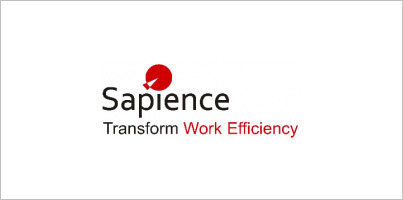 CEO and Co-Founder, Sapience Analytics, Shirish Deodhar, is pleased with the market response to their first software product, Sapience, and says their objective is to become the default standard for Automated Enterprise Effort Visibility and Gain
CEO and Co-Founder, Sapience Analytics, Shirish Deodhar, is pleased with the market response to their first software product, Sapience, and says their objective is to become the default standard for Automated Enterprise Effort Visibility and Gain
Sapience Analytics was set up in 2008, as a software products company. It was formed by four serial entrepreneurs, who had come to realize that the future of Indian IT belonged to product ventures and that software services was a commodity business. The team faced the compelling need of stepping into the market of software products. The core product in this case is an award-winning, patent-pending, Sapience, an employee productivity analytics solution that claims to deliver over 20 per cent increase in work output from your existing team. In an interview with ProductNation, Shirish Deodhar talks about the Sapience product journey, its unrivalled position in the market and the company’s future plans.
Why and how did you start Sapience? Why this area of work efficiency?
 Sapience Analytics has been co-founded by four serial entrepreneurs. By 2008, we had spent 25 years in outsourced product development, including successful exits of previously founded companies. After mentoring a few product companies, one of us, Swati Deodhar, decided to build a solution to address the challenge of measuring and improving productivity.
Sapience Analytics has been co-founded by four serial entrepreneurs. By 2008, we had spent 25 years in outsourced product development, including successful exits of previously founded companies. After mentoring a few product companies, one of us, Swati Deodhar, decided to build a solution to address the challenge of measuring and improving productivity.
In mid-2009, we had a prototype with an integrated dashboard displaying software engineering metrics aggregated and analyzed from different tools. This had to do with visibility into the underlying effort of employees and teams as they went about their assigned work.
Absence of work visibility makes it difficult to increase work output, and affects productivity. Contemporary practices of 24×7 work using laptops, flexible office hours, work-from-home (WFH) policies, globally distributed teams, and outsourcing intensify the problem of measurement. Many companies even stop these progressive HR practices in order to improve productivity, just like the recent controversial ban on WFH at Yahoo. We saw an opportunity to benefit the business through greater productivity while encouraging employee friendly policies. The solution also helps employees work smart and improve their work-life balance.
What are your product’s key differentiators?
Sapience helps deliver over 20 percent increase in work output from the existing team without requiring any change in process or additional management overhead. Sapience achieves this through Automated Work Visibility. This is a game-changer for any business, driving over INR 10 million in annual value per 100 employees.
Sapience captures employee work patterns in a highly automated manner with virtually no manual intervention. Agents installed on the individual machines collect user data, and forward it to the central server. Each user gets an individual dashboard, while long term analysis / reporting at business level are available to managers on the central server. Sapience integrates with the customer’s ERP and other systems to enable effort analytics and capacity optimization across all aspects of the business. Customers can opt for Sapience hosted cloud server (SaaS) or an on-premise server.
Besides the revenue/profit gain for the business, here are a few benefits for various stakeholders:
- For employees – they can ensure better focus on key activities
- Managers – they can guide their teams to work smarter
- Senior management get the ‘macro view’ – pointing out which teams are under-utilized
What was the funding strategy to create this product? Time and effort taken to develop it
Once the product concept was validated with some initial installations, we received US $350,000 from the Indian Angel Network in May 2010. Then in November 2011, we received around US $1 million funding from Seed Enterprises.
Who are your competitors? What is the biggest challenge Sapience has faced so far? How did you address that challenge?
Sapience remains the only product available globally that delivers enterprise class automated time/effort analytics. At first glance, some prospects confuse Sapience with employee monitoring tools that have been around for a long time. User time is classified into productive and non-productive work, and aggregated for a pool of employees on weekly and monthly basis.
One of our challenges is to highlight that Sapience does not change corporate culture, but adapts to it. We are addressing this with focused messaging, listening to employee and management feedback from our installations, and building the required capabilities.
What’s been your success mantra in expanding to emerging markets / its reach?
We have been fortunate to have India as a large potential market for Sapience, since it keeps the cost of sales and support low. The product timing has also been good, since productivity at work is becoming a key concern at IT Services companies and for subsidiaries of global MNCs. Since the economic downturn in 2008, revenue growth has declined and billing rates have remained flat or even dropped. Costs have continued to escalate, and profit at IT companies is now taxed.
We were warned that India is considered a very challenging market in which to sell enterprise products, especially for a start-up, and even more so for a ‘Made in India’ product. We encountered the classic innovation curve when selling the products. While everyone liked Sapience, most managers were reluctant to change the status quo in their companies. However, a few bold and innovative leaders recognized the value and signed up as our initial customers. In late 2010, the first release was picked up by companies such as IdeaS (a SAS subsidiary), Excelize, and EnVenture. These were all 75 to 150 user license deals. The next step was to persuade larger 2,500+ employee companies. In mid-2011, senior management at Zensar and KPIT gave Sapience its initial break into the medium sized segment. By early 2012, we got a breakthrough at Tech Mahindra, a leading IT company.
What have been your BIG lessons – personal, professional and otherwise? What lessons would you like to share with someone who is struggling or planning to get into product development?
I wrote a book called ‘From Entrepeneurs to Leaders – Building Billion Dollar Product Companies from India’ that was published by McGraw-Hill in 2010. But the BIG lesson is a very fundamental advice from an ancient Indian text (the Bhagvad Gita): ‘Do your work well for its own sake, without aiming for rewards.’
What inspired you to be an entrepreneur? What lessons would you like to share with someone who is struggling or planning to get into product development?
I did my B-Tech (EE) in 1980, from IIT Bombay. Following a Master’s in the USA, I worked at Burroughs Corporation in Southern California for several years. Got a US patent for the work that I did in my first year of work. I became an entrepreneur by accident when I met someone from the US, who wanted to outsource work to India, and helped co-found my first company, Frontier Software, in 1989. Frontier was a pioneer in outsourced product development, and with product offshoring to India being uncommon then, it took us 10 years to scale to 150 employees. One of our first customers, VERITAS Software (now Symantec Corp.) acquired Frontier in 1999. By 2003, we had scaled VERITAS India to over 600 employees in 16 product teams, and over 30 percent patents filed (though the India operation was 22 percent of worldwide engineering).
In late 2003, I and two others came together at In-Reality Software and grew it rapidly, before another successful exit to Symphony Services Inc. We scaled the Symphony Pune business to US $25 million and 700+ employees by 2007.
After mentoring a few product start-ups between 2007 and 2009, we decided to try and build a successful product company from India. We are now focused exclusively on Sapience Analytics.
Time on Work matters not Time in Office
Sapience automatically determines on-PC and away-from-PC time, and differentiates between actual work and personal time.Your 9-6 pm staff (typically women) may be more efficient than those staying lateThe 9-6 pm employees are most efficient at work – since they contribute high work hours in proportion to time in office. They often tend to be women employees who have commitments at home.
Programmers don’t spend even 50% of their work day in programming!
It is about whether you are focused on activities that matter and which result in most work being done, rather than less important but seemingly urgent tasks.Sapience is discovering that a large amount of employee time is being spent on emails.
This is often a case of poor email habits: opening each email as it arrives, copying too many people, etc. Similarly managers spend a lot of time on planned and informal meetings. The two most important training programs required in companies are on email discipline and how to conduct meetings.What are your future plans –in terms of this (work efficiency) product / and any other?
We have a multi-dimensional ‘expanding web’ growth strategy that covers product functionality, platforms, enterprise scale, and geography. The goal is to become the default standard for Automated Enterprise Effort Visibility and Gain.For example, in the current year, we will cover all platforms including Linux, iOS, smartphones, calendaring tools and third-party presence servers. We have just released mSapience beta for Android smartphones, which help you track time spent on phone calls, travel and meetings away from office. You can distinguish between business and personal work.
What has it taken so long for Indian software market to focus on software product development? What changes have you see in people’s perception toward domestic software products?
India has dominated in the IT Services space for the past twenty years, which has benefited the country and generated self-confidence and reputation for India on the global stage. However, IT Services growth has slowed, and profitability is down. Cloud technologies and widespread adoption of mobiles and increasingly smartphones has caused a technology disruption that new companies can exploit. Indian market for IT products is reasonably large and growing. Moreover, the presence of MNC subsidiaries and large number of experienced software professionals returning back to India means that the right kind of product talent is available. Finally, some degree of angel and VC funding is now possible in this product ecosystem.













